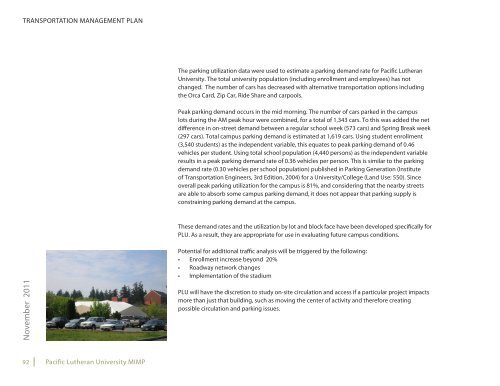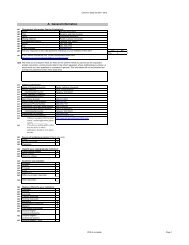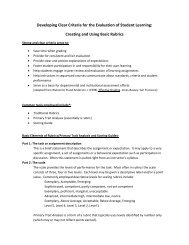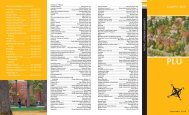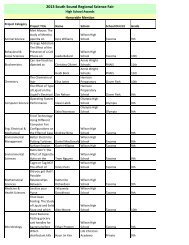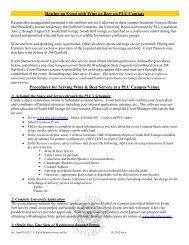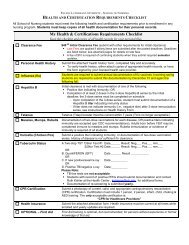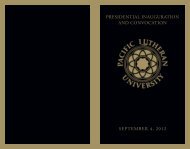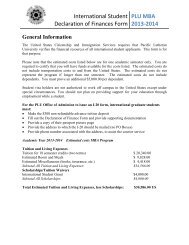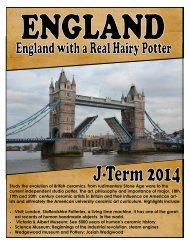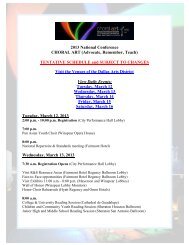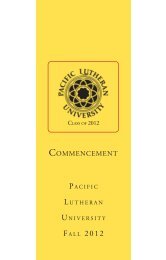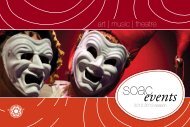Master Plan October 2011 - Pacific Lutheran University
Master Plan October 2011 - Pacific Lutheran University
Master Plan October 2011 - Pacific Lutheran University
Create successful ePaper yourself
Turn your PDF publications into a flip-book with our unique Google optimized e-Paper software.
TRANSPORTATION MANAGEMENT PLAN<br />
The parking utilization data were used to estimate a parking demand rate for <strong>Pacific</strong> <strong>Lutheran</strong><br />
<strong>University</strong>. The total university population (including enrollment and employees) has not<br />
changed. The number of cars has decreased with alternative transportation options including<br />
the Orca Card, Zip Car, Ride Share and carpools.<br />
Peak parking demand occurs in the mid morning. The number of cars parked in the campus<br />
lots during the AM peak hour were combined, for a total of 1,343 cars. To this was added the net<br />
difference in on-street demand between a regular school week (573 cars) and Spring Break week<br />
(297 cars). Total campus parking demand is estimated at 1,619 cars. Using student enrollment<br />
(3,540 students) as the independent variable, this equates to peak parking demand of 0.46<br />
vehicles per student. Using total school population (4,440 persons) as the independent variable<br />
results in a peak parking demand rate of 0.36 vehicles per person. This is similar to the parking<br />
demand rate (0.30 vehicles per school population) published in Parking Generation (Institute<br />
of Transportation Engineers, 3rd Edition, 2004) for a <strong>University</strong>/College (Land Use: 550). Since<br />
overall peak parking utilization for the campus is 81%, and considering that the nearby streets<br />
are able to absorb some campus parking demand, it does not appear that parking supply is<br />
constraining parking demand at the campus.<br />
These demand rates and the utilization by lot and block face have been developed specifically for<br />
PLU. As a result, they are appropriate for use in evaluating future campus conditions.<br />
November <strong>2011</strong><br />
Potential for additional traffic analysis will be triggered by the following:<br />
• Enrollment increase beyond 20%<br />
• Roadway network changes<br />
• Implementation of the stadium<br />
PLU will have the discretion to study on-site circulation and access if a particular project impacts<br />
more than just that building, such as moving the center of activity and therefore creating<br />
possible circulation and parking issues.<br />
92<br />
<strong>Pacific</strong> <strong>Lutheran</strong> <strong>University</strong> MIMP


